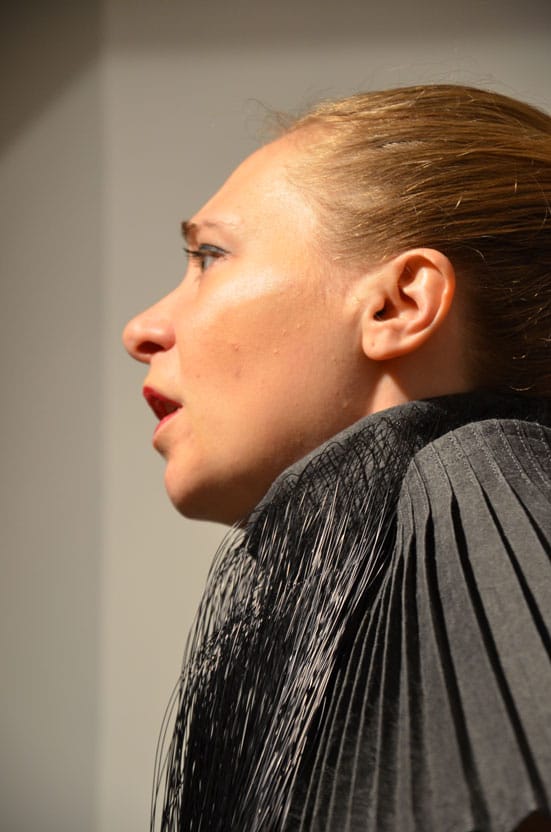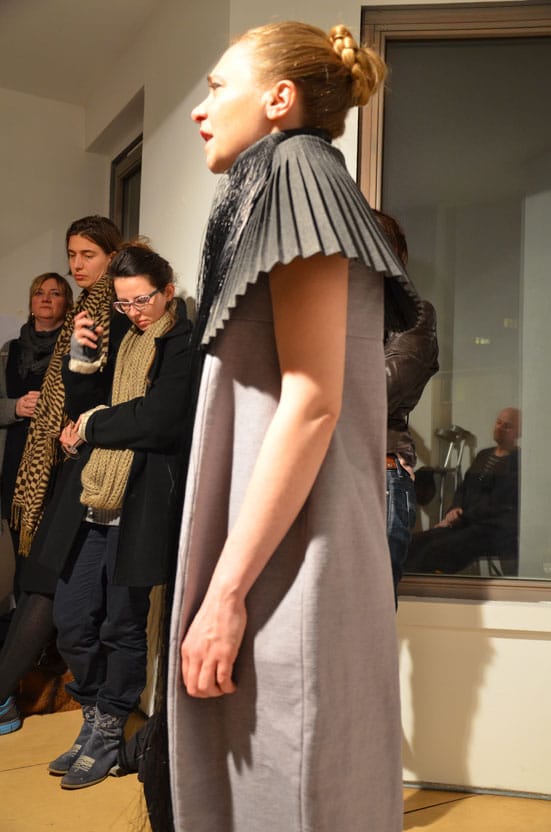Your work is predominately focused on the re-telling of ancient myths - mixed with contemporary and personal references such as current political events or childhood memories - can you tell me a little about how you came to be interested in these ancient stories and the relevance you see them as having today?
I think that these stories are still incredibly important to us – both at an individual and on a cultural level. Myths still shape our imaginations, and their shapes are knitted through our contemporary culture. They remain an important part of the way that we conceive our selves in the world, as social beings with vivid interior lives. Myths give us – and simultaneously mediate – vocabularies that we can use to navigate both the world around us and the world inside our heads. As such, these stories are still very present, still changing, and still useful.
Another reason I think they remain so important is that they occupy a contiguous imaginative space. Myths can bridge states that otherwise remain in binary opposition – so they can be both universal and personal, or true and false, or old and new, for example. That’s a very powerful position, which opens up a whole host of questions as well as possibilities.
In terms of how I came to be interested in myths – I’m not sure that I can answer that. I think that myths have always been there for me. They’re part of how I see the world, and I can’t imagine being without them as a language, a set of images, or as a structure.
You present your work primarily as performance whereby often long texts are recited from memory, while you appear to be in something of a trance-like, detached state. Can you speak a little about how you came to develop your work in this way?
For a long time I was making sculpture, but that always seemed dissatisfying to me. I felt as though I was asking viewers to translate or to extract meaning that I had embedded in the objects I made. When I moved into performance I was able to shed a lot of those insecurities, as the form and the content of the work came together in a far more integrated way. These stories are made to be spoken and to be heard by an audience and through the telling there is a whole tradition that my work becomes part of, from the sibyl to the shaman – of people who re-tell these stories through ritualised speaking.
The detached state is part of that ritual. It allows me to step outside of my day-to-day self in order to regurgitate the work whole in front of a live audience. I’m not improvising in this sense; I am recounting from memory a text that I myself have written. I become a sort of vessel for the words. The words stand in my stead.
For the private view of your show Mouth Open In An Open O at the Agency Gallery, you performed such a work - a 20 minute re-imagining of the Gilgamesh myth - as a kind of ritualised speech. For this, you wore a bespoke performance dress - a highly stylised grey and black dress with a high neck and long thread collar. Can you tell me a little about this costume? How do you decide what to wear and how it adds to the performance.
The garments I wear are created specifically for each performance. I commission them from designers with whom I work to develop each piece. Often I want to change, extend, enlarge or distort my silhouette. The garments are intended to be visually striking, though not necessarily flattering. Often my movement is restricted – one previous dress bound my hands and arms completely to my body so that only my legs and head were ‘active’ in the work.
The garment for Mouth Open... was produced by a designer called Carmel O’Brien and it was the first time we’d worked together. I wanted something that felt organic in shape – we spoke about seed-pods, classical gowns, and tuberous plant and fungal forms. It took a while for us to find the right fabric as we wanted something very structural, heavy, and substantial, but eventually we came across this heavy curtain fabric. The neck-piece is in two parts – a ruff, which is made from folded paper, and a collar which is felt and vinyl. Again this form is quite restrictive, and it served to draw the viewer’s eye up to my head and mouth, and to frame the speech act visually. The visual cues are deliberately mixed – classical and fetish, soft and shiny, with the collar’s vinyl threads falling like a false beard (or a necklace) down from my throat almost to the floor.
There is always a ritual element to the garments in that this is something designed for a very specific purpose, and only ever within the context of a performance. There is something important, I think, about having to put on these particular clothes in order to speak in this particular way.
For the rest of the exhibition, the costume will be displayed alongside parts of the script of the performance. A large floorpiece - a digital print of fabric of your photocopied, naked, body face-down and pieced back together bisects the space. As a performance artist, how did you approach making an exhibition?
It’s very important to me to be able to contextualise the work outside of the moment of live performance, but not to try and mimic or re-play that live moment because I don’t think that that is possible.
For Mouth Open In An Open O, I wanted to try and retain the emotional sense of the performance; that pacing of breath, and the care with which the text is recounted. Alongside the elements you mention is a sound piece in which a cycle of the breath-work from the performance loops continuously in the gallery-space. This sets a tone – literally and metaphorically – for the audience’s reading of the performance script, which is on the wall. I’m asking the viewer to step into the work. When they read the script to themselves, with the audio surrounding them, the viewer is implicated in the re-making of this incantation. They are speaking the ritualised words. What does that do? What might that do?
The floorpiece contains the physical space of the performance after it has happened. I stand on this figure while I recite, and so she becomes a kind of shadow-self, me and not-me, who I can leave behind after I’m gone. The breath-work is similar, in a way. The voice is mine and yet not-mine because it has been separated from me by the mechanics of reproduction. Together, the elements do not recreate the performance, but they give something else instead. They give a space where this thing has happened, and can happen again. The audience become the active presence then, in lieu of the performer.
What is your approach to the documentation and re-presentation of your live work?
I think it’s important to leave a space between the documentation and the live work, and to acknowledge that they are qualitatively different.
For example, I don’t like to video my live performances as I feel that this dilutes them. My work, when it exists as a moving image, is always re-filmed as a performance to camera with no audience present. Photography is less problematic for me, because the still and silent photographic image makes that distance between the live action and the recorded moment perfectly explicit from the start. The ideal re-presentation, for me, is for the performance moment to be able to extend itself into a new scenario that finds an equivalent tone or meaning. That’s what I’ve tried to do at the Agency.
What’s next?
I’m in the middle of a three-year research project that I’m undertaking as part of an AHRC funded practice based PhD at Newcastle University, so for the next while I’ll be continuing to make work that circulates around the epic of Gilgamesh. I’m also trying to unpick what it is about ancient myths that makes them still so resonant to us, so I’m thinking a lot about questions of psychoanalysis and anthropology.
I’m working on two new performances at the moment, one of which is the shortest piece I’ve ever made (at about 8 -10 minutes), and one of which is the longest (at about 6 hours). The short piece is at quite an early stage, but the longer one is Of Gilgamesh and Others, which I’m performing at The Old Hairdressers in Glasgow on Saturday 9 February. This is a day-long performance that was originally developed for Cartel gallery in London in 2012. I’ve continued to work on this piece and it has a new performance garment and a revised script since I last presented it. The garment uses a bespoke digitally printed fabric that’s based on the floorpiece from the Agency, so I’m looking forward to seeing how that turns out.
Exhibition continues until 2nd March.
Rose Lejeune

Ruth Barker, Mouth Open In An Open O, 2013

Ruth Barker, Mouth Open In An Open O, 2013

Ruth Barker, Mouth Open In An Open O, 2013

Ruth Barker, Mouth Open In An Open O, 2013

Ruth Barker, Mouth Open In An Open O, 2013